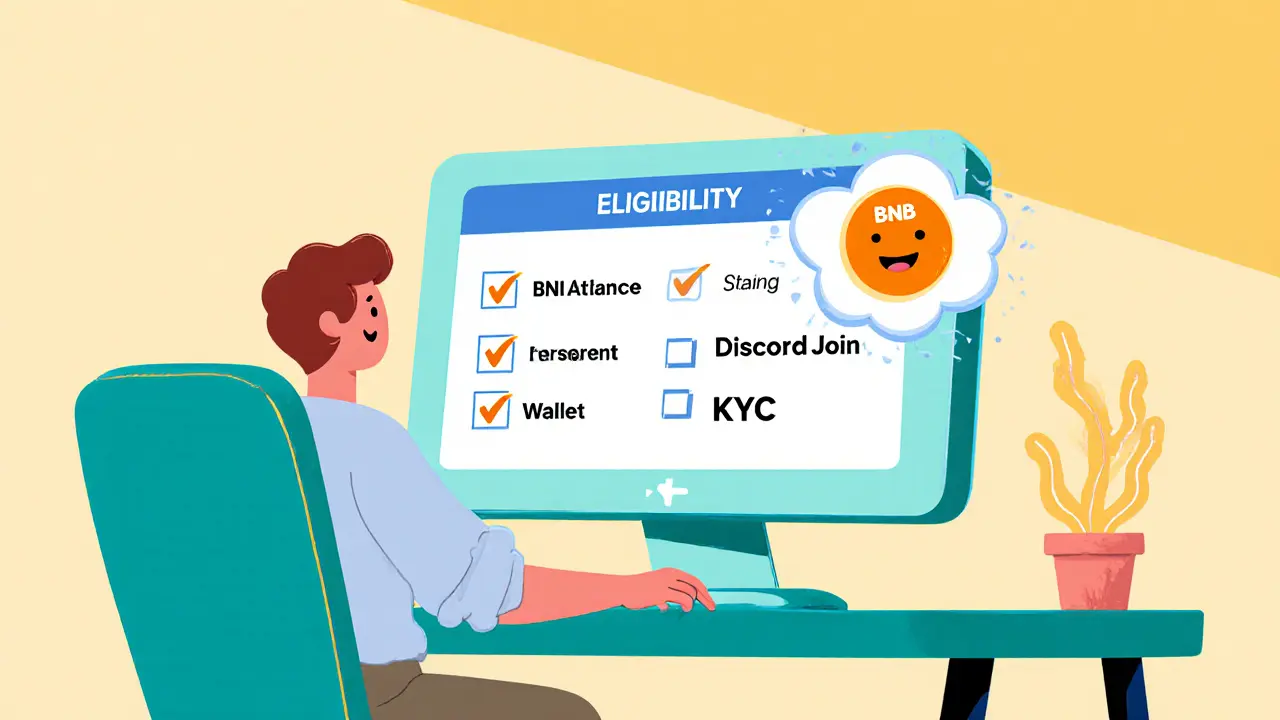Airdrop Eligibility: What You Need to Know
When navigating airdrop eligibility, the set of rules that determine who can claim a free token distribution. Also called token giveaway requirements, it shapes who gets the prize in a crypto airdrop, a promotional event where blockchain projects hand out tokens to users. The process sits inside a broader token distribution, the method by which new coins reach the market and hinges on clear eligibility criteria, specific conditions like holding a certain coin, completing tasks, or passing KYC checks. Understanding these pieces helps you avoid missing out on free crypto and keeps your wallet ready for the next drop.
So why does airdrop eligibility matter? Projects use it to attract users, reward early adopters, and bootstrap network effects. By setting a bar—like a minimum balance of a native token, participation in testnets, or social media engagement—they filter for active community members. This means your chances improve when you align your holdings and actions with those expectations. It’s not just about luck; it’s a strategic move that blends marketing with decentralised growth.
Key Factors to Check
First, look at the wallet requirements. Most airdrops need a compatible, non‑custodial wallet that can receive the specific blockchain’s tokens. If the project runs on Ethereum, you’ll need an ERC‑20 capable address; for Binance Smart Chain, a BEP‑20 address works. Some drops even demand a snapshot date—your balance at that moment decides eligibility. Miss the snapshot, and you’re out.
Second, examine holding thresholds. Projects often say, “Hold at least 100 XYZ tokens before block 12345678.” That figure isn’t random; it helps the team gauge genuine interest. If you’re below the threshold, you can either buy the required amount or wait for a future round that lowers the bar.
Third, consider activity‑based tasks. Many airdrops reward users who tweet, join Telegram groups, or complete a short survey. These actions are tracked via unique links or referral codes. While they seem simple, they add to the project’s community signal and can boost your eligibility score.
Fourth, watch out for KYC and regulatory steps. Some jurisdictions require identity verification to prevent fraud. If a project asks for a photo ID, scanning your passport helps them stay compliant, and completing it often unlocks higher‑tier rewards.
Fifth, keep an eye on token lock‑up periods. A few airdrops give you tokens that can’t be sold for 30‑90 days. Knowing this beforehand prevents surprise liquidity issues later on.
Finally, stay updated on project announcements. Airdrop terms can change, especially if the team adjusts the distribution model after a security audit or a partnership. Subscribing to the official newsletter or following their Discord ensures you catch any tweaks before the claim window closes.
By mapping these elements—wallet compatibility, balance snapshots, activity tasks, KYC, lock‑up rules, and ongoing communication—you create a checklist that boosts your chance of qualifying. Think of it as a mini‑audit: each item you verify reduces the risk of being left out.
Below you’ll find a curated list of articles that dive deeper into specific airdrop campaigns, walkthroughs for claiming tokens, and the latest eligibility trends across the crypto space. Whether you’re hunting a new DeFi drop or a gaming token giveaway, these resources will give you the practical steps and insider tips you need to claim what’s yours.
Anypad (APAD) Airdrop Details - How to Prepare for the Upcoming Token Distribution
by Johnathan DeCovic Jul 4 2025 18 CryptocurrencyExplore the upcoming Anypad APAD airdrop, learn eligibility rules, claim steps, risks, and how Anypad compares to other crypto launchpads.
READ MORE
